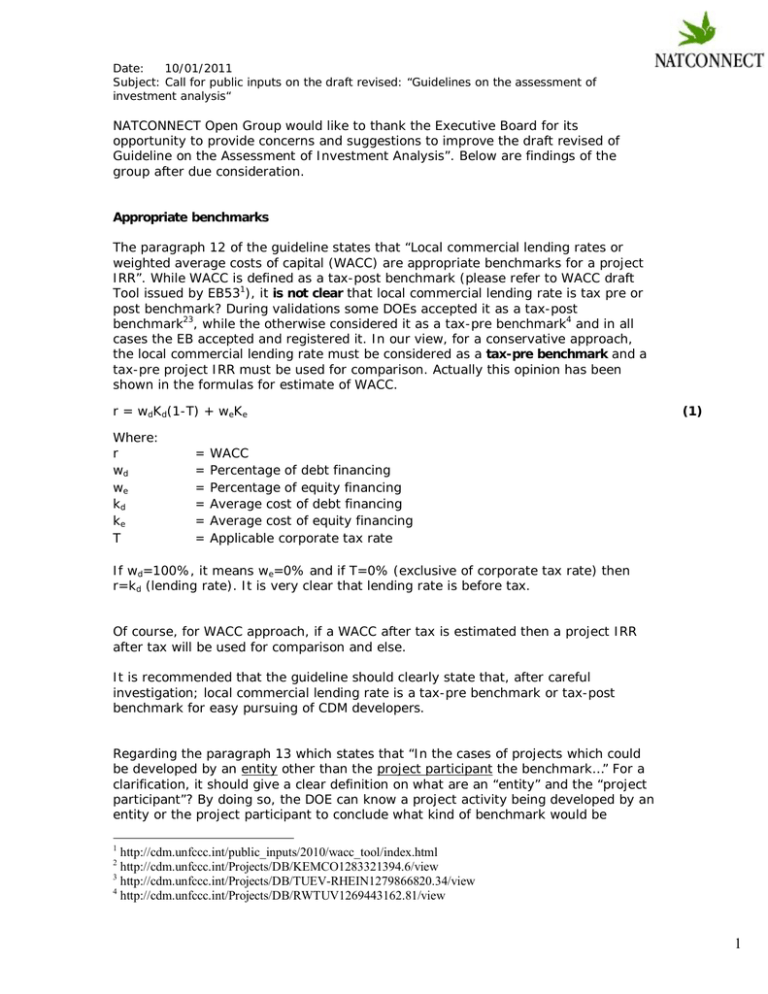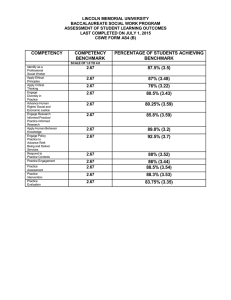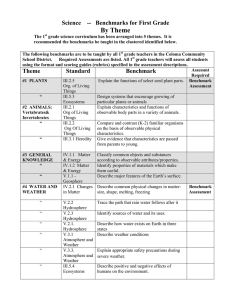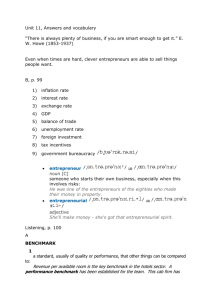Document 11116739
advertisement

Date: 10/01/2011 Subject: Call for public inputs on the draft revised: “Guidelines on the assessment of investment analysis“ NATCONNECT Open Group would like to thank the Executive Board for its opportunity to provide concerns and suggestions to improve the draft revised of Guideline on the Assessment of Investment Analysis”. Below are findings of the group after due consideration. Appropriate benchmarks The paragraph 12 of the guideline states that “Local commercial lending rates or weighted average costs of capital (WACC) are appropriate benchmarks for a project IRR”. While WACC is defined as a tax-post benchmark (please refer to WACC draft Tool issued by EB531), it is not clear that local commercial lending rate is tax pre or post benchmark? During validations some DOEs accepted it as a tax-post benchmark23, while the otherwise considered it as a tax-pre benchmark4 and in all cases the EB accepted and registered it. In our view, for a conservative approach, the local commercial lending rate must be considered as a tax-pre benchmark and a tax-pre project IRR must be used for comparison. Actually this opinion has been shown in the formulas for estimate of WACC. r = wdKd(1-T) + weKe Where: r wd we kd ke T = = = = = = (1) WACC Percentage of debt financing Percentage of equity financing Average cost of debt financing Average cost of equity financing Applicable corporate tax rate If wd=100%, it means we=0% and if T=0% (exclusive of corporate tax rate) then r=kd (lending rate). It is very clear that lending rate is before tax. Of course, for WACC approach, if a WACC after tax is estimated then a project IRR after tax will be used for comparison and else. It is recommended that the guideline should clearly state that, after careful investigation; local commercial lending rate is a tax-pre benchmark or tax-post benchmark for easy pursuing of CDM developers. Regarding the paragraph 13 which states that “In the cases of projects which could be developed by an entity other than the project participant the benchmark…” For a clarification, it should give a clear definition on what are an “entity” and the “project participant”? By doing so, the DOE can know a project activity being developed by an entity or the project participant to conclude what kind of benchmark would be 1 http://cdm.unfccc.int/public_inputs/2010/wacc_tool/index.html http://cdm.unfccc.int/Projects/DB/KEMCO1283321394.6/view 3 http://cdm.unfccc.int/Projects/DB/TUEV-RHEIN1279866820.34/view 4 http://cdm.unfccc.int/Projects/DB/RWTUV1269443162.81/view 2 1 Date: 10/01/2011 Subject: Call for public inputs on the draft revised: “Guidelines on the assessment of investment analysis“ suitable in the context of the underlying project activity? And the CDM developers will make a correct selection of the benchmark for the project activity they are developing. Country inflation While the revised guideline did not provide whether or not the country inflation must be consider in investment analysis, some DOEs always ask about how the inflation is considered in financial analysis. It, therefore, is recommended that the guideline should state clearly whether or not the country inflation would be considered in investment analysis and how it will be deal with in financial analysis. Actually, the country inflation consideration in investment analysis will make the estimate less conservative, but it reflects actual situation in each country. So, it makes sense. Application of default values given in Appendix A Paragraphs 13 and 14 of the revised guidelines classify two categories of project including: projects which could be developed by an entity other than the project participant, and projects for which there is only one possible project developer. For the first category, the guideline states that the benchmark “should be based on parameters that are standard in the market”. Internal company benchmarks should only be used for the second category projects. According to the paragraph 15 of the revised guidelines requires that, “if the benchmark is based on parameters that are standard in the market”, the values provided in the Appendix A shall be used to determine the expected return on equity. As known, the estimate of expected return on equity is subject to stock market which varies continuously. So, the values provided in the Appendix A should be “optional” and not “mandatory” for this case. For a company internal benchmark, as this benchmark is calculated based on the data provided by the project developer only which is not transparent and unqualified or sometime it has been not audited, so to ensure the transparency and conservative approach the values given in the Appendix A shall be applied. Of course, in cases if the project developer can show strong and certified evidences and data used for estimate of company internal benchmark, the DOE can consider and cross check the data with experienced experts to confirm the conformity and validity. And eventually, they can accept it as an appropriate benchmark. Company Internal benchmarks Given the paragraph 14 “company internal benchmark/expected returns (including those used as the expected return on the equity in the calculation of a weighted average cost of capital-WACC) and paragraphs 16, 17 which state that “if a company internal benchmark is used for the expected return on equity”, these statements seem to be confused with the statement given in paragraph 6(c) of the tool for the demonstration and assessment of additionality that a company internal benchmark is weighted average capital cost (WACC) of the company (hereinafter referred to as 2 Date: 10/01/2011 Subject: Call for public inputs on the draft revised: “Guidelines on the assessment of investment analysis“ internal WACC), which is calculated based on only debt financing structure of specific company and does not reflect the standards in the market. As known expected return on equity (or cost of equity) is only a part of WACC5 estimate (including internal WACC). Moreover, the expected return on equity is determined upon the stock market (equity market) information and country risks, as well as beta factor (if using CAPM) and it is independent from WACC estimate. So, the question is that how a company internal benchmark is used for the expected return equity estimate? If my view is correct, it is proposed to provide a clear definition on what are company internal benchmarks? And how it will be estimated in these contexts? Finally, the paragraphs 16 & 17 should be re-worded as “If a company internal benchmark is used for the expected return on the equity, the cost of debt………….” Best regards, Head of Natconnect Open Group Nguyen Thanh Quang Email: cdm.quangnguyen@gmail.com Tel: +84 916 401 891 5 http://www.investopedia.com/articles/fundamental/03/061103.asp 3







